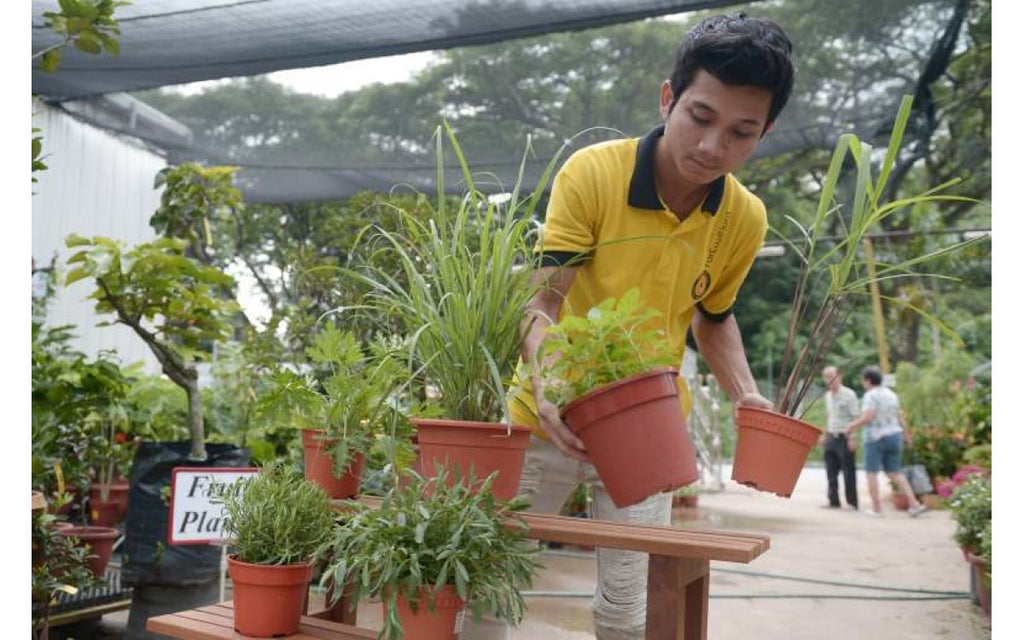WILL THAT PANDAN POT HELP YOU REPEL MOSQUITOES?

Will that pandan pot help you repel mosquitoes?
If you live in Singapore long enough, you are probably very familiar with the pandan lifehack to repel mosquitoes, cockroaches and other insects. Usually this tip is passed down from your mother, from your grandmother, and from your great-grandmother.
What is a pandan lifehack?
It is very simple. Cut a bunch of pandan leaves, bruise them a bit, tie them up in a bundle and then place it anywhere you need to repel any insect. The most common places are kitchen cabinets and taxis.
The beauty of this lifehack is that pandan leaves are not the only things you can use. Lemongrass and neem leaves can also be used.
Some people even resort to having pots of pandanor lemongrass in their houses, hoping to kill two birds with one stone, I mean, one pot.
Sounds like a dream, right? Natural, great decoration, and repels insects too.
Question: So, does the potted version really work?
Answer: Sorry, but I will have to give it a big fat NO.
Reason #1: The repellency only comes from within
As a whole plant, pandan, lemongrass and neem do not confer repellency as it would have been in bruised, burned or extracted form. This explains why, for thousands of years, man have been utilising plant-based repellency by hanging bruised plants, burning as fumigants or pressing to extract oil.
So, that pot of pandan or lemongrass is useful only on your chopping board since open fire burning is illegal in Singapore.
Reason #2: It will provide breeding ground for insects instead
When not maintained well, any potted plant will become potential breeding site for mosquitoes, especially if left exposed to rain or over-watered.
Hardened soil, plant axils or potting plate can collect water overtime and female mosquitoes can lay eggs inside the water to breed.
If the potted plants are subjected to over-watering over extended period of time, the plants will suffer from root rot and die, attracting also other insects such as fungus gnats.
Conclusion
When it comes to mosquito protection, we cannot risk it on unproven methods, no matter how green we perceive it to be. Not to mention our time and money trying to explore every single tip presented all over the internet.
Let us revisit our tips on choosing the right natural repellents and using them the right way
Have you visited our special post about this yet? Here are the quick tips to get you started in the right direction:
How to choose
According to Centers for Disease Control and Prevention (CDC), it is recommended to use repellents approved by Environment Protection Agency (EPA) that contain any of the active ingredients below, as these are proven safe and effective, even for pregnant and breastfeeding women:
- DEET
- Picaridin (known as KBR 3023 and icaridin outside USA)
- IR3535
- Oil of lemon eucalyptus (OLE) or para-menthane-diol (PMD)
- 2-undecanone
How to apply
- Cover up your skin – As much as you reasonably can in Singaporean weather with long clothing.
- Apply on exposed skin only – Leave no empty spot and be mindful of your facial area and wounds.
- Apply over clothing – Add a layer of repellent on your clothing next where possible.
Remember, always re-apply your repellent as often as you can!
© Jo-Lynn Teh, BCE
Jo-Lynn Teh is ESA Board Certified Entomologist based in Singapore. While her specialisation is on tropical insects that affect public health and agriculture, Jo-Lynn’s passion is also to help people understand insects. Find her on LinkedIn.

Leave a comment